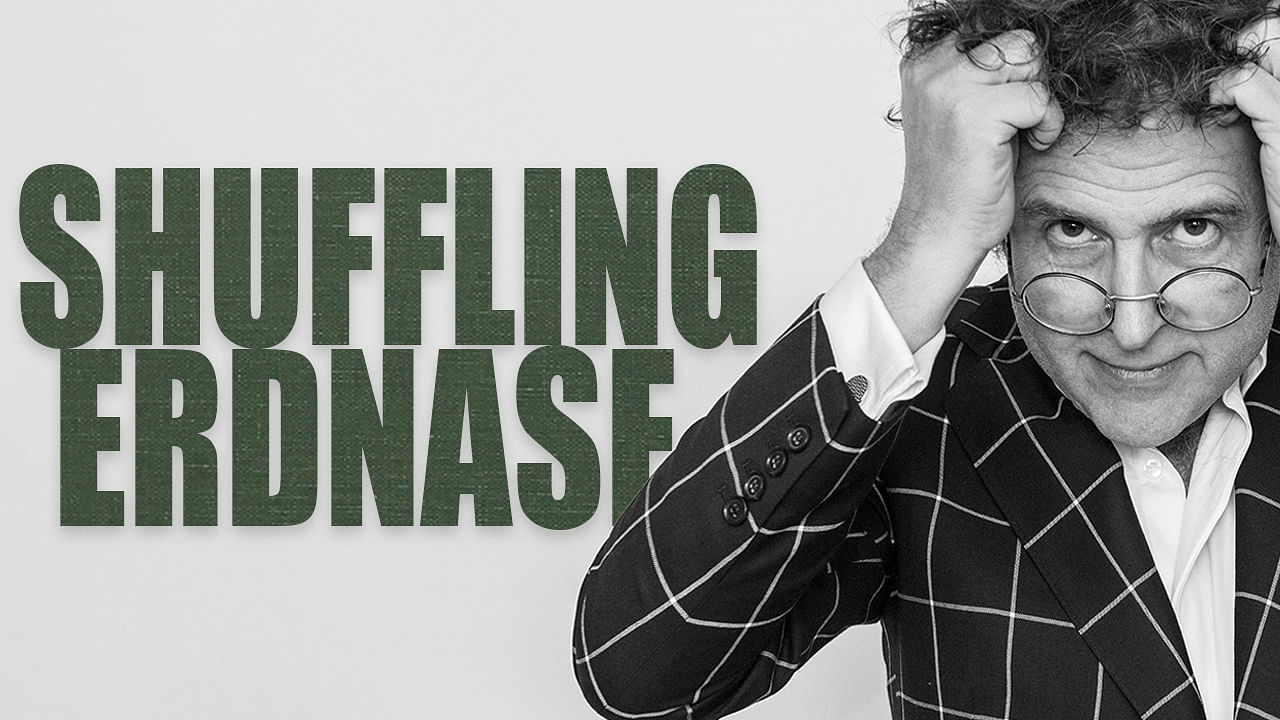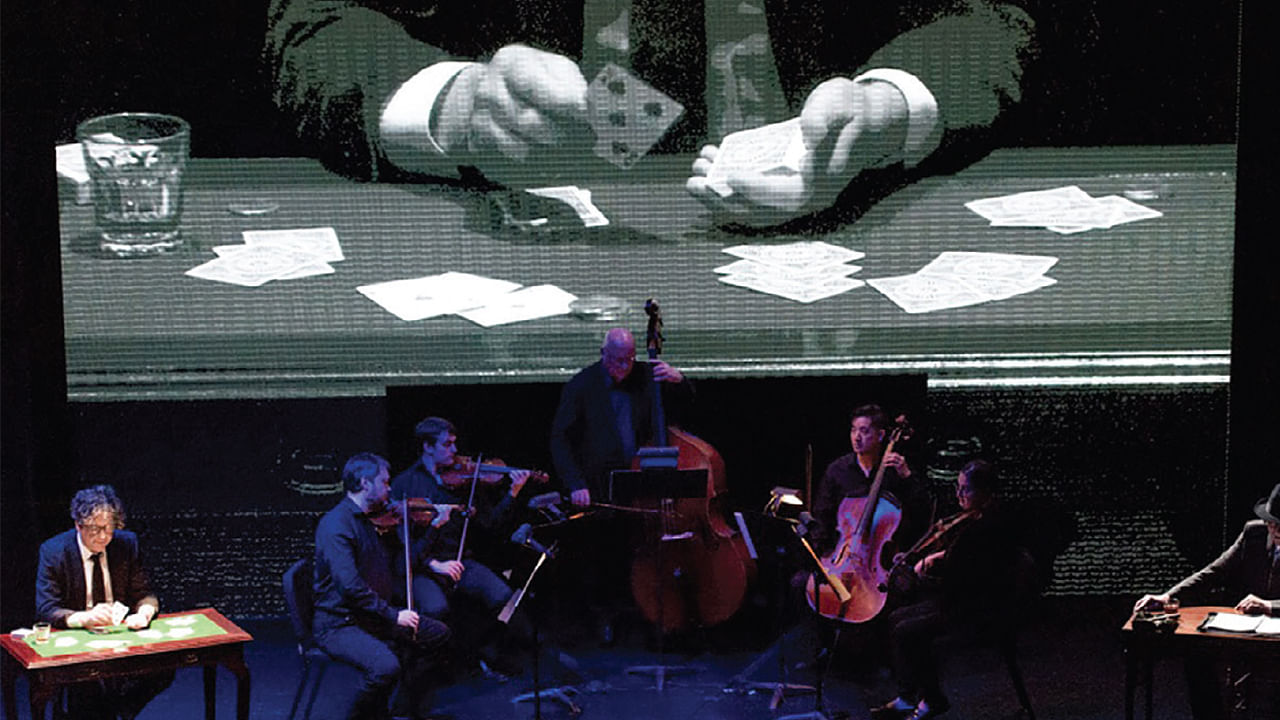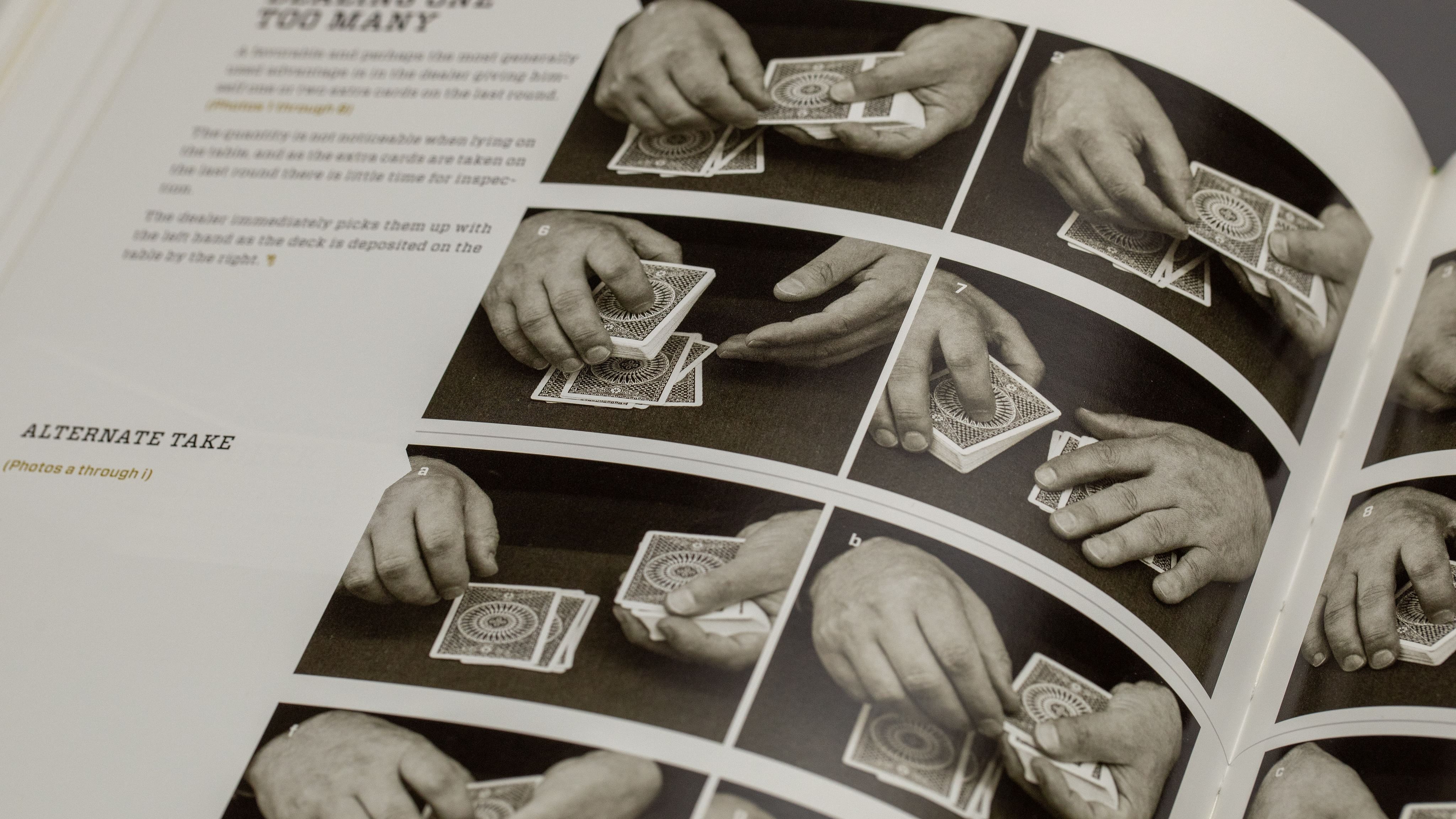Shuffling Erdnase
By Vanishing Inc. - Thursday, October 10, 2024
Our recent acquisition of Magicana gave us the ability to bring you remarkable books like The Experts at the Card Table by David Ben. This eye-opening reimagining of S.W. Erdnase's Expert at the Card Table makes it easier then ever for modern magicians to comprehend the invaluable concepts first introduced in the seminal text. When David's book was first released in 2015, he sat down with Alan Howard of MAGIC Magazine for a fascinating interview that we are grateful to have full permission to post below. Enjoy!

Shuffling Erdnase by Alan Howard
MAGIC Magazine | April 2015
MAGIC: There have been a number of books about Erdnase and The Expert at the Card Table. Can you explain why there is still such an interest?
BEN: Erdnase is the foundation of sleight of hand in the 20th century. At a fundamental level, Erdnase teaches your hands to work together. For me, the moves he teaches represent the magic equivalent of Bach Inventions — each a beautiful work in its own right, but as a collective, a textbook on technique and composition in every key.
MAGIC: What about books like Expert Card Technique, Royal Road to Card Magic, and Card College?
BEN: Each of those books has merit, but none of them, with the exception perhaps of Royal Road, reflects a real pedagogy. They are, by and large, a collection of moves and tricks. Erdnase is different. The techniques employ not just digital skill, but more importantly, timing. To execute the techniques properly — that means, together — requires flow and timing. Erdnase is also a primer on prop management, how to handle things — in this case, cards — with economy and grace. Erdnase also demonstrates the importance of managing transitions. In gambling parlance, “how do you get into it, and how do you get out of it.” All of us — particularly those who perform with apparatus — could benefit from learning more about managing transitions.
MAGIC: How did you learn the Erdnase material?
BEN: I struggled with the book when I was in my teens. Who doesn’t? It was Ross Bertram, one of the great sleight-of-hand artists of the 20th century, who broke it down for me. I would meet him week after week, for many years, and for a very long period we went through the book line by line. It was Ross who impressed upon me that Erdnase was really a system.
MAGIC: A system?
BEN: Yes, a system in which “every move is more or less dependent on another.” That is something that has been my mantra for years. It was Ross Bertram, in my opinion, who was the first to really flag this. Most Erdnase pundits take a different approach. They are fond of citing that it was Erdnase who suggested that the bottom deal is the most important move. Erdnase says this, but then immediately qualifies the notion by stating that without being able to locate, cull, and stock the cards to the bottom, execute false shuffles and cuts, and circumnavigate the cut, the bottom deal would be useless. That is why every move is more or less dependent on the other. And this is not from just a technical point of view, but also from a conceptual one. The importance of the bottom deal is just one of what I consider to be many misconceptions about the book.

MAGIC: What are some of the others?
BEN: Two others that we have tried to address in this new edition are the misconceptions that the book was both well written and well illustrated. I don’t believe either is true. I would be surprised, for example, if the author had a college education. He may have had the gift of gab — a skillset not uncommon for advantage players, particularly those who worked solo, as one has to soothe the ego and feelings of the losers in order for them to keep losing. But I also believe that he probably learned to turn a phrase because of his work experience. And while magicians are fond of quoting various passages — there are many pithy and profound lines in the book — it is very poorly organized and rife with errors. There are technical errors in the language, the illustrations, and the grammar. It cannot be said to be a polished work. The biggest problem, however, may be that Erdnase never had an editor. If he had, the book would have been much better. So, I suppose I have taken on the task of being the editor.
MAGIC: How did you go about that task?
BEN: About fifteen years ago I started piecing this together, literally and figuratively. I scanned each page with optical character recognition software and converted it into a Word document. I then started reorganizing the text — without altering the words — into an order that reflected “the system.” That’s when I discovered a host of grammatical errors and the fact that Erdnase repeated himself — sometimes word for word. As I edited, the material became that much cleaner and much easier to read.
MAGIC: Can you give us an example?
BEN: In his introductory remarks, Erdnase describes the process of marking cards. The words related to marking cards, however, really belong as the preamble to “Second Dealing.” Because of the ease of modern technology, I was able to move that text to that part of the book. The same holds true with something like the Riffle Cull, which is really the forerunner of the double undercut. I moved it to the section on “Locating, Securing and Stocking” cards, rather than retaining its original placement later on in the book. So, the words are the same — except where I cut out duplication or cleaned up a transition passage — but the organization of the material is completely different.
MAGIC: What about the illustrations?
BEN: The magic community is fond of Marshall Smith’s illustrations. The problem is that the work in Erdnase is so fine, the handling of the cards so precise, that it would be impossible to capture that sort of detail in a line drawing, particularly with how we have been told the drawings were commissioned and executed. It is not, of course, the fault of Marshall Smith or Erdnase. They just did not have the time or technology available to them that we have today. Modern technology and lenses allow us to capture that information in much more detail. For example, the 64 line drawings in the “Card Table Artifice” section have been replaced with over 800 photographs. There is simply no comparison.
MAGIC: Although you are using modern technology to capture the images, the photographs have a rather retro feel to them.
BEN: That was intentional. Our original inspiration was the work of Eadweard Muybridge and his studies of motion. Fortunately, Julie Eng is a superb photographer and captured the images beautifully. We shot all of the images twice. She wasn’t happy with the first lot. Being a perfectionist, she isn’t happy with this lot either, but I said that we would not reshoot again — the photos are beautiful.
MAGIC: You mentioned the 64 line drawings. Weren’t there originally more?
BEN: There were 101 originally, but they also illustrate the material in the “Legerdemain” section of the book. Erdnase was divided into two parts: “Card Table Artifice” and “Legerdemain.” Our book only delves into the “Card Table Artifice” section.
MAGIC: Are you saving the “Legerdemain” section for another volume?
BEN: There will be two more volumes in this Experts at the Card Table trilogy, neither of which will cover the material in “Legerdemain.” The next volume will present annotations on the material in Volume One, but more of a detailed exposition — a meditation, really — than any of the previous annotations offered in either print or DVD. This meditation is based on my studies with Ross Bertram, my study of Vernon, my time spent with Herb Zarrow, and my association with the odd advantage player. The third volume will focus on “gaps” in Erdnase, and how those gaps were addressed by Dad Stevens, Vernon, and others.
MAGIC: Why did you choose to release this material in three volumes rather than one?
BEN: Julie Eng convinced me that everyone is better served if the material is released over a period of time. Sample pages showing the new look of text and photos for The Expert at the Card Table. We are hoping that those interested in Erdnase will take the time to read it in this new format and develop new insights into the work. It is only after they have had the time to digest this information that they can really appreciate or understand the connections and variants presented in subsequent volumes. Also, books are so large today that few process the contents. Most magicians skim the pages, look for a trick or two to satiate their curiosity, and then put it on the shelf with other books. We believe that by parceling out the information in this manner, the material will be that much more accessible.

MAGIC: Do you think that the purists will be annoyed at the revamping of the text and illustrations?
BEN: Most likely. The original work is, however, in the public domain, and if this helps deliver the content with greater clarity, then I say, “Why not?” Further, it is not just the revised order and enhanced illustrations that provide greater clarity, it is also the design and layout of the book. Both force the readers to see the material as if they were reading it for the first time. That alone makes a huge difference.
MAGIC: What was the most difficult part in this project?
BEN: The design of the book. I assembled the text some fourteen years ago. We shot the photographs seven years ago. Karl Johnson wrote the introduction six years ago. It took several established designers multiple “kicks at the can” to come up with the design template we now employ. In hindsight, it now seems pretty simple and straightforward, but I can assure you it was very difficult. In many ways, it is both a textbook and a coffee table book. Kevin McGroarty, Michael Albright, and Julie Eng deserve huge credit for wrestling the design issue to the ground.
MAGIC: Is the identity of the author commented on in this book?
BEN: No. Obviously, I believe the author was E.S. Andrews or I wouldn’t have listed him as such. If you explore the technical aspects in any detail and actually try to master them, it excludes, in my opinion, most of the other so-called candidates from serious consideration. And what is more important, at least for me, is the work itself.
MAGIC: Out of curiosity, can you actually do the stuff in the book?
BEN: By and large, yes. I cannot, however, do the Erdnase Shift — one-handed or two-handed. Fortunately, I am not alone. I have not seen a single person ever perform either of the two shifts in a deceptive manner. The Erdnase Shift is the one move that I have not illustrated in the book, because I can’t do it. I have seen a clip of Vernon doing it, though, and that was better than anyone I’ve ever seen do it. I also hear that Charlie Miller did it beautifully. The problem is, how do you get into it — that is, how do you get your fingers into that position in a natural manner at the requisite time to do the shift.
MAGIC: Do you believe that the techniques or, as you say, “the system,” could still be used today to cheat at cards?
BEN: Yes and no. The post-Erdnasian approach to advantage play is now associated with Steve Forte. Steve is too humble to take credit, but there is no question that most magicians who have an interest in gambling work today try to or at least aspire to mimic Steve and the way he handles cards. And because Steve is associated with casinos and has a different style from that espoused in Erdnase, they would say that Erdnase has little application for today’s card cheats. Erdnase stated, of course, that his work had nothing to do with play in a casino environment. So even back then, to say that his technique would not fly in a casino was not a fair comment.
Willis Kenney — a real advantage player — would often say, after seeing some gambling related move, “There is no way you could do that in a game.” When I told Steve this anecdote, he corrected me. He suggested that what Willis should have said was, “There is no way you could do that in my game.” Steve added that even the most bold-faced technique may work in some game. So the lesson is, Erdnase has a time and place.
Of course, I would never encourage anyone to cheat at cards. It’s illegal and, for most people, immoral. Studying Erdnase, however — particularly the system — is like learning an instrument. Having the ability to play a piece straight through — or in card parlance, the ability to locate, cull and stock, false shuffle, false cut, circumnavigate the cut, and deal — and to improvise “on the fly” instead of playing individual bars, is like sitting down at a musical instrument and being able to improvise, take flight in one’s imagination, and travel to another world. No audience is required — just you and, in this case, a deck of cards.
The Experts at the Card Table is Available Now at Vanishing Inc.
Buy Now
Back to blog homepage
Similar posts on the blog:

